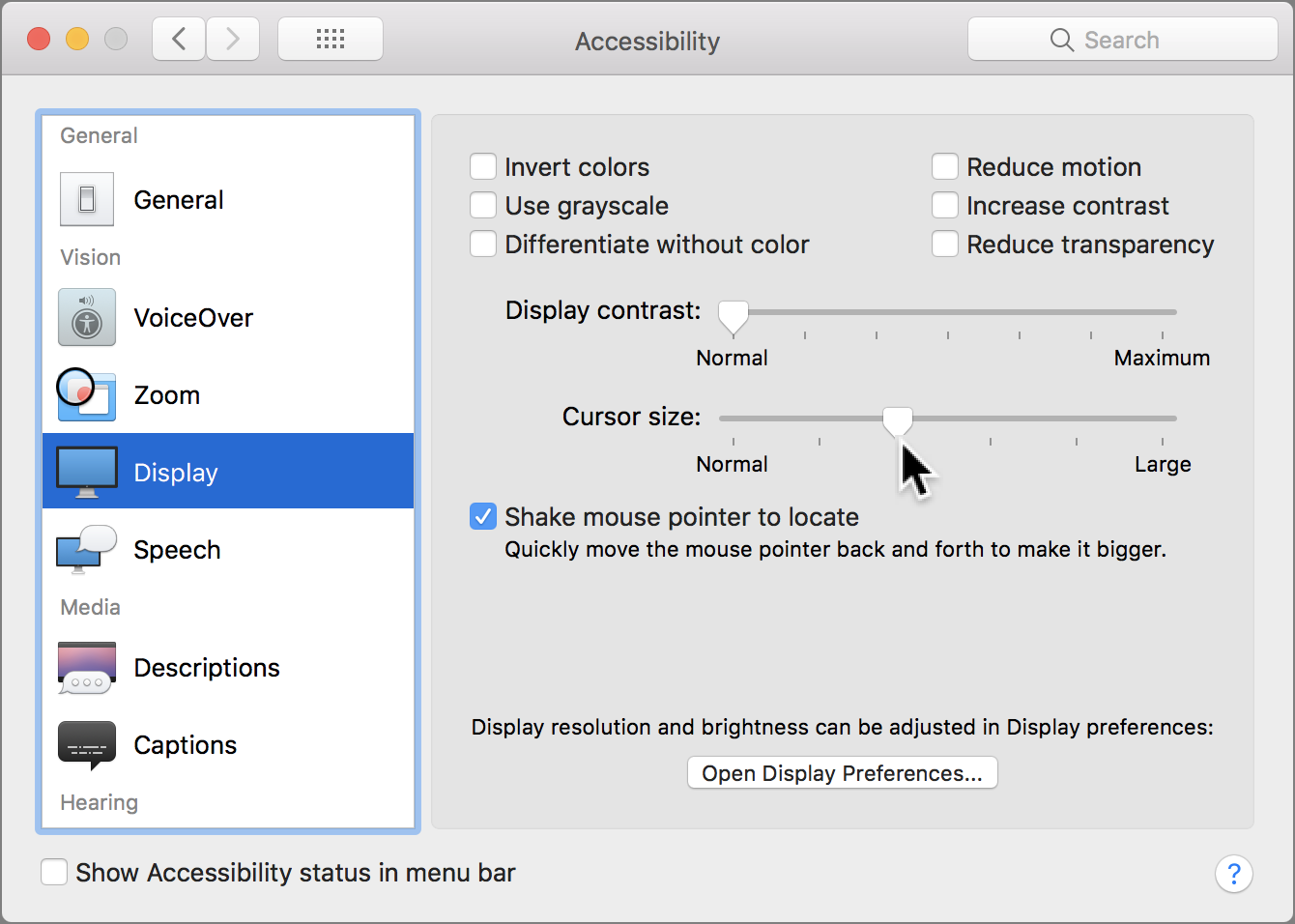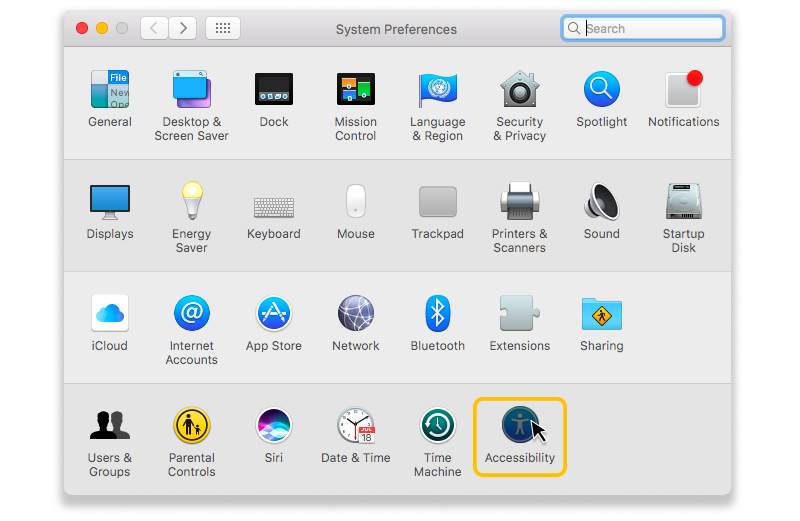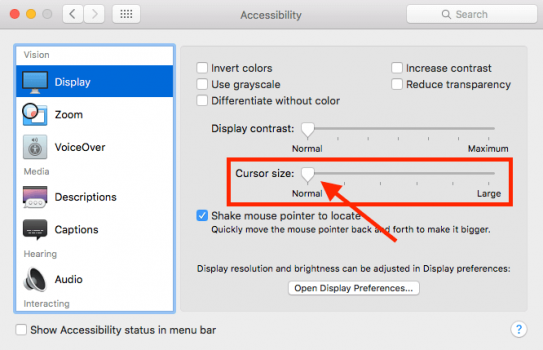

I use this little gem when projecting my Mac's screen to an audience or class.
#Reason for mac cursor enlarging software#
Remember, this will affect all system cursors, not just the arrow pointer.ĭon’t you agree that things look so much better now with your distended yet velvety smooth cursors?įor those readers who may have additional issues locating the cursor on screen, there are several utilities available from the App Store that assist in locating a capricious cursor.Īn app that I have used for several years is PinPoint by Lagente Software ($4.99 on the Mac App Store). In all versions, as you make the cursor adjustment, you will see the change in real-time. Click Display in the panel on the left side of the Accessibility pane, and then drag the Cursor Size slider to the right to make it larger. Start by going to System Preferences > Accessibility. Let me show you how you can set your Mac’s cursor size. The Accessibility preference panel in OS X Mavericks

However, any system pointers utilized within a third-party application will sport the newer, sleeker look. These will magnify, but with the less than ideal pixelated look. There doesn't yet appear to be support for third-party application-specific pointers, such as the aforementioned Photoshop tool pointers. They look much, much better - tack sharp, and a pleasure to work with. Jaggies are completely eliminated on all magnified system pointers. Now, the entire set of system pointers is smoothed out nicely when magnified.Įxamples of magnified and smoothed pointers That used to be the case before OS X 10.7 Lion, when any magnified cursor adopted the unwanted "jaggies." While certainly still useable and, useful to a degree, it just felt like we were back in the 8-bit graphics world of the early eighties. I know what you're thinking: "Sure, but as soon as I make the cursor even a bit larger, it really looks awful!" It has other practical uses as well: finding the cursor in a sea of monitors connected to your Mac, enlarging various tools such as those found in Photoshop's tool palette, and for emphasizing operations when demonstrating software to a live audience or to viewers of a screencast. This feature is particularly helpful to Mac users whose eyesight may not be the best. The size of these system pointers can be easily altered in System Preferences – in the highly useful Accessibility preferences pane in OS X Mavericks.
#Reason for mac cursor enlarging how to#
I mean – topic: how to resize the pointer. Now that our little refresher on the familiar pointer has concluded, let's get down to the main point. Next: Resizing the Pointer Part 2 - Resizing the Pointer Suffice it to say that you want to minimize the appearance of this pirouetting pinwheel, which basically indicates that OS X is commandeering the system for its own needs and may be a harbinger of serious system maintenance. The details as to why we see it on occasion, as well as how to avoid it, are subjects reserved for future discussion.

The Spinning Wait Cursor (that's Apple's terminologyįor the sake of accuracy, let's call it what Apple deems to be the official name: the "Spinning Wait Cursor." On second thought, "Spinning Pizza of Death" is more fun. And then, there is the dreaded "Spinning Pizza of Death.” Well, that’s what I call it, anyway. The two system pointers we're most familiar with are the "mouse pointer" – "arrow" is it's official moniker – and the “I-beam." The latter is used to indicate the text insertion point wherever you need to.

According to the latest revision of Apple's Human Interface Guidelines document, there are eighteen system pointers in OS X.Ī few of the typical OS X system pointers Pointers are the endearing little on-screen indicators designed to provide feedback to users. Actually, it's the old-timers who say "cursors" while everyone else calls them "pointers." Apple uses both terms interchangeably in their documentation (yes, Apple does provide documentation, which can be found at ).


 0 kommentar(er)
0 kommentar(er)
